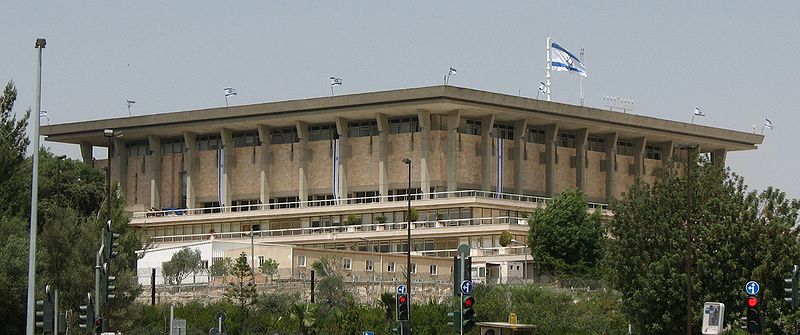NOTE: This is the first publication of this analysis by Dr.Gerstenfeld in English.
Israel’s Election Campaign after Party Lists are Submitted
By Manfred Gerstenfeld
 On December 6th, the second phase of the election campaign for the 19th Israeli Knesset ended with the submission of the party lists.1 The last day brought a major surprise move. Amir Peretz, former leader of the Labor party, left for the new The Movement party headed by former Kadima Leader Tzipi Livni. His relationship with Labor leader Shelly Yachimovich had turned increasingly sour.2
On December 6th, the second phase of the election campaign for the 19th Israeli Knesset ended with the submission of the party lists.1 The last day brought a major surprise move. Amir Peretz, former leader of the Labor party, left for the new The Movement party headed by former Kadima Leader Tzipi Livni. His relationship with Labor leader Shelly Yachimovich had turned increasingly sour.2
The first phase of the campaign ended on 14 November when Israel’s Pillar of Defense operation against Gaza began. That phase had been dominated by the merger on the Center/Right of the Likud and Lieberman’s Israel is our Home party. During Pillar of Defense, the election battle continued on a low burner.
The campaign’s second phase started after Israel’s ceasefire with Hamas on 21 November. Its main events were the establishment of lists of candidates by the parties, as well as the splintering of the Center/Left. When Livni entered the fray with The Movement, it seemed that it would be competing for the same pool of voters as Labor and Yair Lapid’s new party, There is a Future.
Various polls showed substantial variations in the number of seats parties would obtain if elections were held now, an indication of the many floating voters. The broad picture seems rather stable however. Almost all polls show that The Likud/Israel is our Home together with the national-religious and ultra-orthodox parties will gain between 65-70 seats together. This figure would be at the higher end if the extreme right Strong Israel passes the threshold of 2% of the votes. Polls also show that Arab parties will obtain around ten seats.
This leaves approximately 40-45 seats for which the Center/Left will compete. Some polls raise doubts that the extreme dovish Meretz party will pass the threshold.3 Most indicate that it will maintain at least its present representation of 3 MK’s. After the lists were submitted, a Maariv poll gave Labor 18 seats, the Movement 10 and There is a Future 5.4 A substantial number of votes may get lost, depending on how many parties close to the threshold will not succeed. These also include Kadima led by Former Army Chief of Staff Shaul Mofaz. It is the largest party in the current Knesset with 28 MKs, most of which have recently defected to the Movement, Labor or the Likud, or announced that they would leave politics. Another party hovering around the election threshold is Am Shalem (A Complete People) led by Knesset member Haim Amsalem, who had been expelled from the ultra-religious Shas party.5
The lists were established either through primaries, by an appointments committee or by the party leader. Both Likud and Labor held primaries. The first twenty positions on the Likud list which were chosen nationally returned 18 sitting MK’s.9
The Labor party primaries gave many spots to newcomers. After Barak had split off in 2011 with 4 other MK’s, the party only had 8 seats left. Former Minister Isaac Herzog, an ally of Yachimovich, beat Peretz for the second spot on the Labor list.10
Israel is our Home leader Avigdor Lieberman established his list with only one newcomer in the top ten. Senior businessman Yair Shamir will occupy the second spot. Surprisingly, Deputy Foreign Minister Danny Ayalon was left off the list.11 Two other MK’s retired from politics.
There is a Future brought as its main acquisition former Home Security head Yaakov Peri.12 Former Labor party leader Amram Mitzna joined Livni. Like Peretz, he was defeated in the 2011 elections for the Labor leadership by Yachimovich. Livni persuaded seven MK’s from Kadima to join The Movement. This meant state pre-election financing of more than 5 million shekels. If The Movement gets at least 7 seats, the total amount received will be over 9 million shekels.13
With this political jockeying going on, little time was left for campaigning. This will change now that the lists are in. Two basic givens are that many voters see “the peace process as the Palestinians’ intermediate goal for Israel’s destruction and that the economy is performing better than European ones. It is thus unlikely that the Center/ Left will make sizable dents in the Center/Right voting pool. The election battle may be thus dominated by parties sniping at each other both within the Center/Right and the Center/Left.
Footnotes:
2 Ilan Lior, Jonathan Lis and Haaretz, “Former Labor chief MK Peretz joins Livni’s Hatnuah Party,” Haaretz, 6 December 2012.
9 Yuval Karni, Moran Azulay, “Likud primaries: Feiglin in, Begin and Meridor out,” Ynet News, 27 November 2012.
10 Times of Israel Staff, “Full results of Labor Party primaries,” Times of Israel, 30 November 2012.

